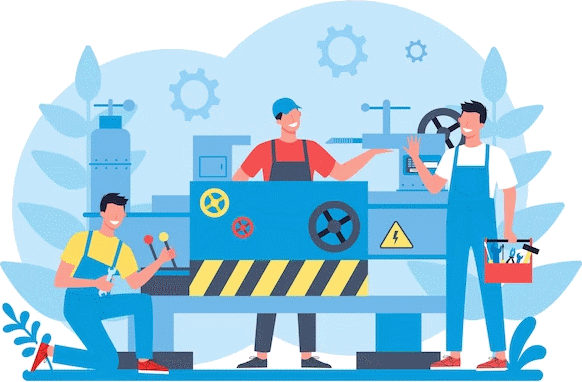
Working safely with machinery, that's how you do it!
When various machines are used in the workplace, it is important that you know what the risks of working with these machines are. In addition, it is also important that it is clear how to work with these machines. This article tells you more about how to work safely with machines.
Preparation for use
Before using the machine in the work process, it is important to examine all risks. This can be done before or just after purchase. What are the risks involved in using the machine in the workplace?
Every workplace is unique and has its own work processes. Does the purchased machine meet all safety requirements and what place will it be located?
If the machine is finally chosen, it is important to test the machine extensively and go through all the instructions. These instructions should be read particularly carefully by the employees who will actually be using the machine.

Good information
Does the company have a workspace where employees work with machinery, such as a lathe?
Then it is important to be aware of the risks to the safety and health of the workers. Not only you, but also the workers should be well informed about the proper measures. This is how risks are reduced.
For example, consider using safety screens or wearing protective clothing. Remember: both employers and employees are responsible for following all safety rules.
Inspection and maintenance
Not only are the above issues important, the maintenance of the machines is also hugely important. Have good maintenance procedures in place that include when the machines should be serviced, who does it and how to do it safely.
When maintaining, repairing and/or cleaning machines, it is important to stop the daily work process. This is because maintaining and repairing machinery can be dangerous. For example, accidents can occur when the machine is not properly shut down.
Lastly, it is important to regularly inspect the machines. In this way, unsafe situations are prevented. The inspection of machines requires a pre-conceived plan. Furthermore, it is good to perform daily safety checks in which a list of concrete safety aspects is checked. To carry this out correctly, employees must be trained to do this so that they can intervene in the event of any risks.
